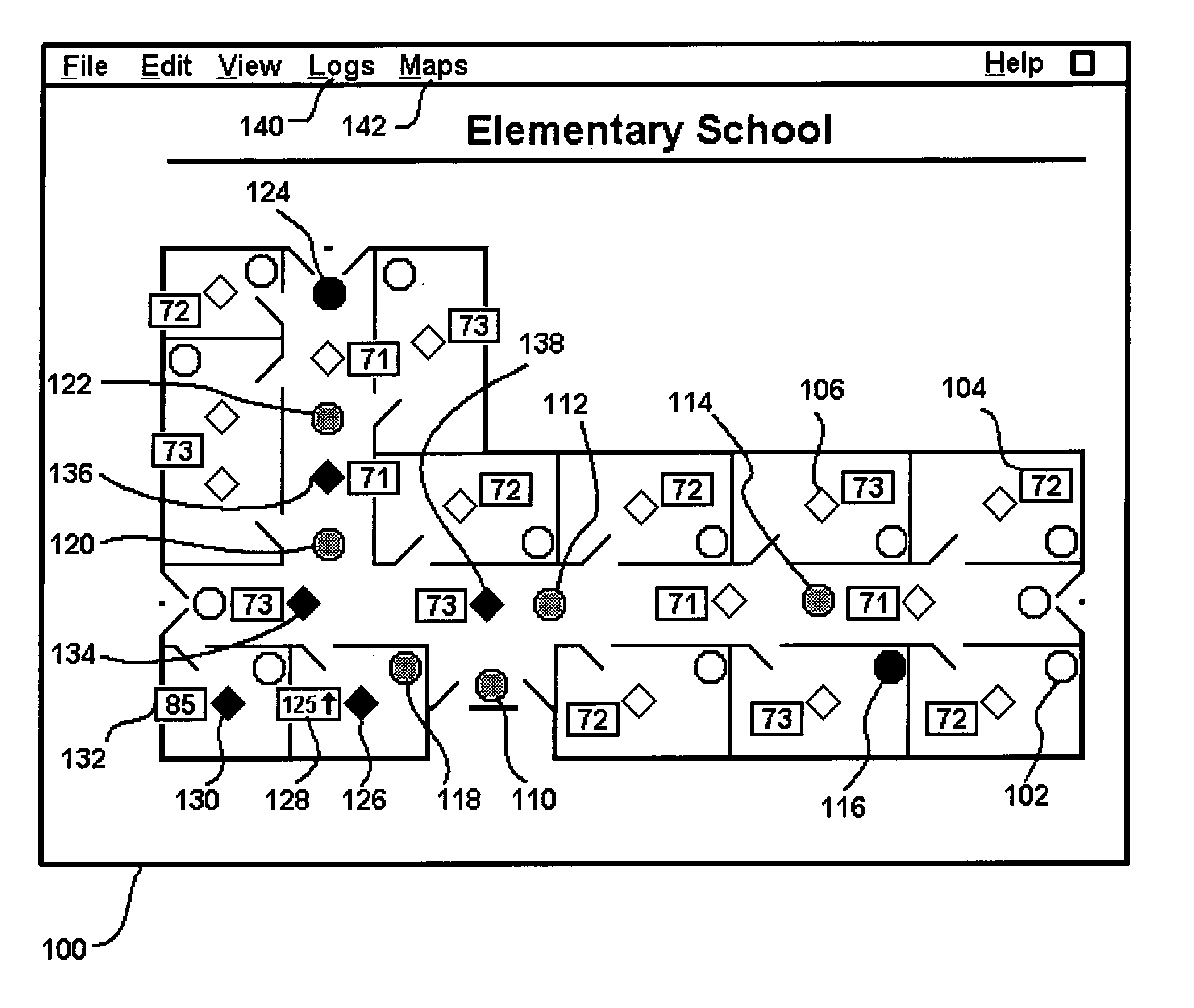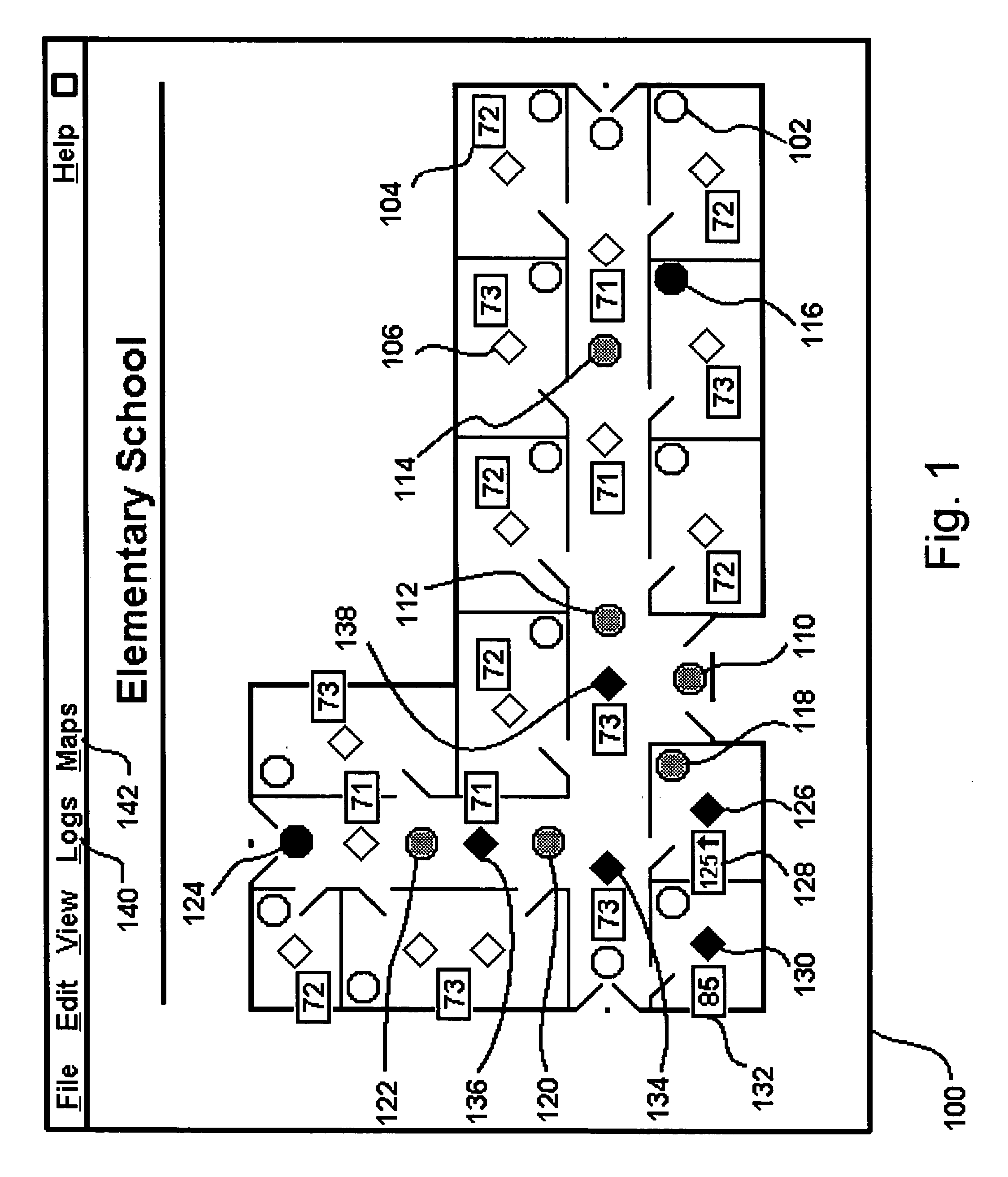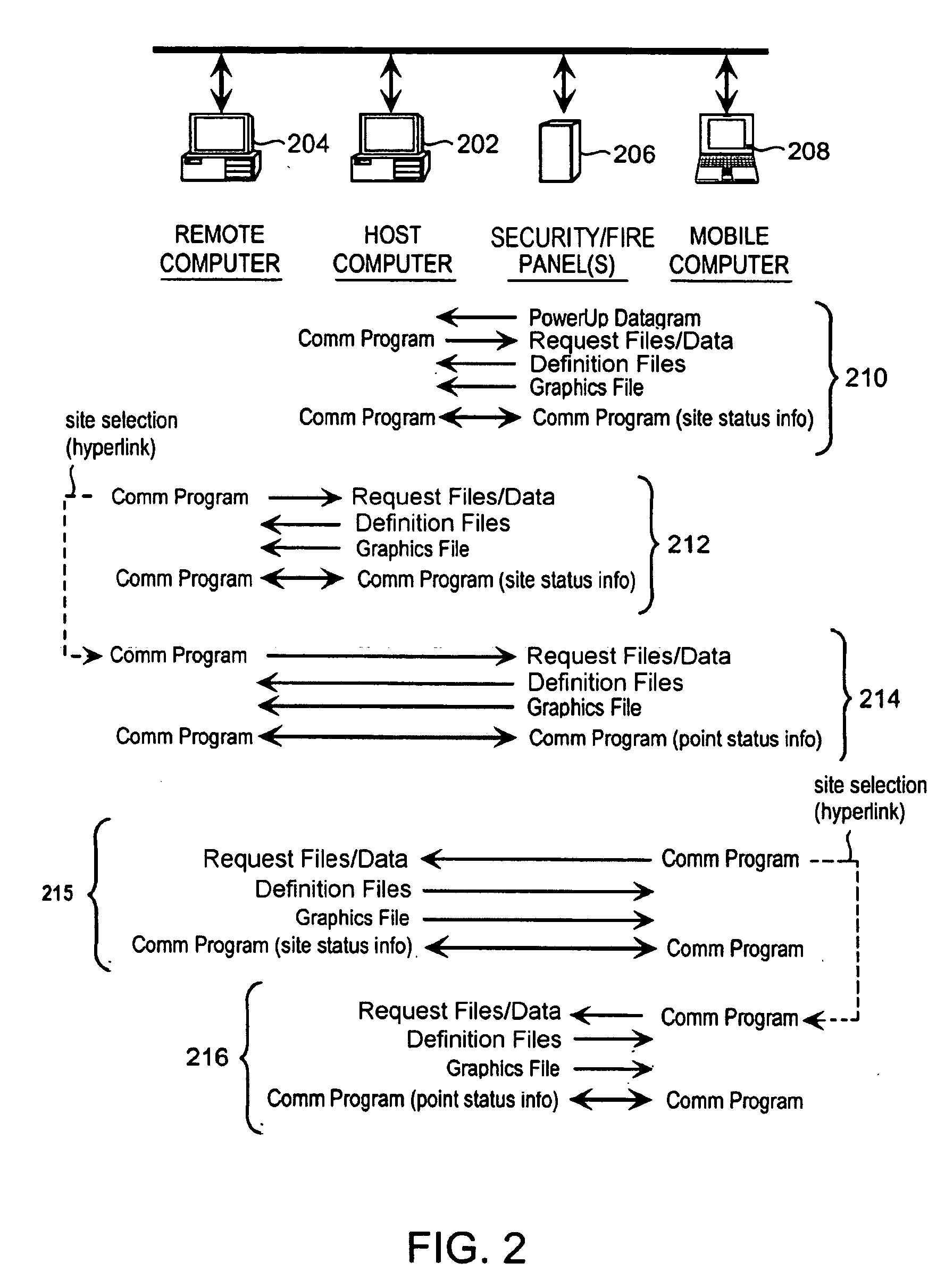Method and apparatus for remotely monitoring a site
a remote monitoring and site technology, applied in the field of remote monitoring sites, can solve the problems of large number of video surveillance cameras, large quantities of data that cannot be easily transmitted to remote monitoring sites in real-time, and system has not achieved the widespread use associated with binary off/on systems
- Summary
- Abstract
- Description
- Claims
- Application Information
AI Technical Summary
Benefits of technology
Problems solved by technology
Method used
Image
Examples
Embodiment Construction
[0039] 1. Functional Overview. Before describing details of an exemplary system for implementing an exemplary embodiment of the present invention, an overview of the invention will be provided using one exemplary display of information that is provided at a supervisory monitoring system's graphical user interface in accordance with the present invention. Referring to FIG. 1, a graphical user interface provides a screen display 100 of a particular floor plan in a building being monitored for intrusion and fire detection. In the FIG. 1 example, a graphical user interface included in the supervisory monitoring system is displaying a building floor plan for an elementary school with its alarm points, and illustrates a two-person intrusion with a related fire (arson) in progress. In this black / white rendition, points not in alarm are white circles 102 indicating intrusion detectors, environmental monitors 104 (in this example, air temperature) indicating reasonably expected room temperat...
PUM
 Login to View More
Login to View More Abstract
Description
Claims
Application Information
 Login to View More
Login to View More - R&D
- Intellectual Property
- Life Sciences
- Materials
- Tech Scout
- Unparalleled Data Quality
- Higher Quality Content
- 60% Fewer Hallucinations
Browse by: Latest US Patents, China's latest patents, Technical Efficacy Thesaurus, Application Domain, Technology Topic, Popular Technical Reports.
© 2025 PatSnap. All rights reserved.Legal|Privacy policy|Modern Slavery Act Transparency Statement|Sitemap|About US| Contact US: help@patsnap.com



